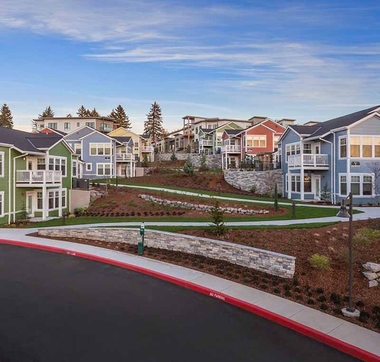Finding accepting housing when you grow old

by Rob Howard
Associate Editor
The number of LGBT+ seniors continues to grow. There are an estimated 2.4 million of them today, and that is expected to grow to over five million by 2030, according to a study by the Williams Institute.
One of the biggest problems faced by these seniors is the need for assistance in the “Activities of Daily Living” (ADL). There are five major categories listed on www.payingforseniorcare.com, a website of the American Elder Care Research Organization.
ADLs are, as the name implies, things that people must do to be able to live indecently.
The website lists the five ADLs as these:
1. Personal hygiene - bathing, grooming and oral care;
2. Dressing - the ability to make appropriate clothing decisions and physically dress oneself;
3. Eating - the ability to feed oneself though not necessarily to prepare food;
4. Maintaining continence - both the mental and physical ability to use a restroom;
5. Transferring - moving oneself from seated to standing and get in and out of bed.
The problem for LGBT+ seniors is this: When they have decreased ability to perform the ADLs, how will they get assistance?
The Williams Institute study, “LGBT Aging: A Review of Research Findings, Needs, and Policy Implications”, points out some of the issues that arise.
LGBT+ seniors may either avoid health care or conceal their sexual and gender identity from health provides; they may have fewer options for informal care because they are more likely to be singe and less likely to have children to care for them. And they may have less financial ability to afford the care that they need.
SAGE (Advocacy & Services for LGBT Elders) adds to the concern with the specter of abuse. Their website, www.sageusa.org, points out that elder abuse – a serious problem for all seniors, not just for those who are LGBT+ - can be mental, financial, physical or sexual. It can take place in the home, in a hospital, in a long-term care facility or any other setting.
They point out that many older people deal with elder abuse, but most incidents go unreported, saying only 1 in 14 incidents are reported.
And LGBT+ seniors may face hostility from staff and fellow residents in long-term care facilities.
Anna Gorman of Kaiser Health News did a story last year about a senior gay couple in Georgia. Patrick Mizelle and Edwin Fisher were so dismayed by the attitudes they found when they were exploring senior living communities in their home state that they picked up their lives and moved to Rose villa, a senior living complex outside of Portland, Ore.
Rose Villa actively reaches out to gay, lesbian and transgender seniors.
“’It is a very serious challenge for many LGBT older people,’ said Michael Adams, chief executive officer of SAGE, or Services and Advocacy for Gay, Lesbian, Bisexual and Transgender Elders. ‘[They] really fought to create a world where people could be out and proud. Now our LGBT pioneers are sharing residences with those who harbor the most bias against them’,” Gorman wrote.
Some cities have LGBT+ oriented senior living communities, but the cost of them is often prohibitive.
“Recognizing the need for more affordable housing, the Los Angeles Gay & Lesbian Elder Housing organization opened Triangle Square Apartments in 2007. In the building, the first of its kind, residents can get health and social services through the Los Angeles LGBT Center. The wait for apartments with the biggest subsidies is about five years,” the story said.
(The Gaylyran Anna Gorman’s full article. Read it here.)
Other cities that have opened LGBT+ elder facilities include Chicago, Philadelphia, San Francisco and Minneapolis. But these facilities can only house small numbers of our aging LGBT+ population.
It is essential that LGBT+ advocacy organizations start exploring the needs of our seniors. The need is great now. Think how much more critical it will be in 2030 with twice as many elders. 2030 is, of course, only 13 years away.
Copyright The Gayly – September 24, 2017 @ 2:55 p.m.CDT.





